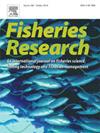Indonesia is one of the sea cucumber-producing countries with small-scale fisheries activities in harvesting multi-species products. Few biological data are available for sea cucumber fished from the Indonesian sea floor. This study assessed species diversity and compiled a great amount of biometric data on commercial sea cucumber species observed from 23 locations representing east to west Indonesia, focusing on the intertidal habitats covering seagrass and coral reefs. A total of 4553 individuals of sea cucumbers belonging to 39 commercially valuable species were observed; size composition, length-weight relationships, and Fulton’s condition factors were investigated. The assessment demonstrated that only several species were observed in large sizes. The current study added Holothuria flavomaculata and H. verrucosa to the list of exploited species nationally; therefore, 55 sea cucumber species have been confirmed under commercial harvest in Indonesia. Holothuria albiventer, H. excellens, H. flavomaculata, H. rigida, H. verrucosa, and Stichopus quadrifasciatus are discovered as newly reported species being fished for trade globally that have not yet been included in the FAO commercially important sea cucumber list. The body size frequency distributions show that most animals observed in the field during the study period were generally small; this may indicate that sea cucumber populations in Indonesia are under serious exploitation because exploited populations tend to have lower frequencies in larger classes. This is the first study to calculate the length-weight relationships of four species (Holothuria fuscocinerea, H. hilla, H. impatiens, and Stichopus vastus). Thus, the length-weight relationships of nine species in Indonesia have been investigated. Eight species analyzed in this study grow allometrically with a negative allometric. Fulton’s coefficient condition factor displayed that almost all species in nearly all locations had high values, which indicates that local environmental conditions are favorable and support the physical health of the sea cucumbers. This current study provides novel data and will be beneficial in estimating weight in future fishery surveys to estimate stock biomass and catch volumes. It can also be used by the Indonesian scientific authority to recommend the wild catch size of the species involved in the trade to the management authority.


